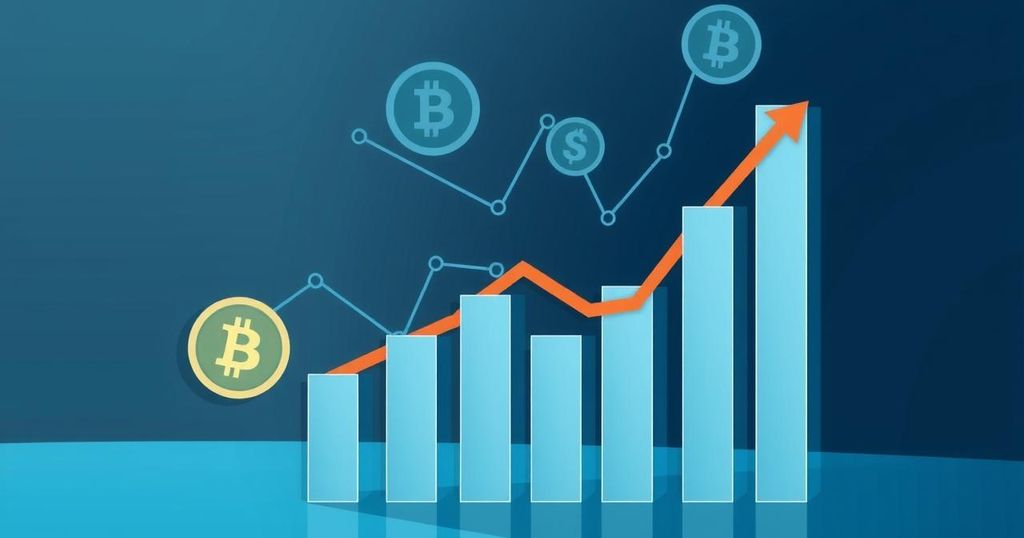Bitcoin Network Hashrate Reaches New Heights: Implications for BTC Valuation
The Bitcoin network has reached a historic landmark, as evidenced by its hashrate that soared to an unprecedented 742 exahashes per second (EH/s) at the beginning of September 2023. This remarkable surge in hashrate indicates a significant commitment from miners who are engaging substantial computational power to secure the network and facilitate transaction validations. However, this increase in hashrate presents notable challenges for miners, likely affecting their profitability and, consequently, the price of Bitcoin itself.
To comprehend the ramifications of this record-setting hashrate, it is essential to know its definition and implications. The network hashrate serves as a measure of the total computational capacity deployed by miners to process Bitcoin transactions and uphold the security of the network. A heightened hashrate typically signifies enhanced security against potential attacks, as a more formidable mining network poses greater difficulties for any malicious actor aiming to compromise the system.
Nonetheless, a rising hashrate implies that Bitcoin mining is becoming increasingly challenging and costly. Specifically, the augmented computational power necessitates more resources to uncover new blocks and obtain mining rewards. Concomitantly with the hashrate increase, the network difficulty— which quantifies the complexity of solving the cryptographic puzzles required for mining new Bitcoin blocks—has also been positioned near its all-time high of 90 trillion. This elevated difficulty level requires miners to dedicate more computational power to sustain their mining efficacy, thereby inflating their operational costs.
As noted on September 3, 2024, the estimated cost associated with mining a single Bitcoin was approximately $71,500, significantly surpassing the average market price of Bitcoin on the same date, which hovered around $57,400. The excess of over $14,000 between mining costs and market valuation creates considerable pressure on miners, adversely influencing their profit margins.
The increase in mining expenses has resulted in a palpable downturn in miners’ revenue. At the end of August, Bitcoin miners were generating daily earnings exceeding $36 million, but by early September, this revenue plummeted to around $26 million. This steep decline in revenue, coupled with the rising operational costs, has compelled many miners to adopt difficult financial strategies to sustain their operations.
A primary response from miners to address these economic pressures is the liquidation of their Bitcoin assets to reconcile the growing operational costs. Data from CryptoQuant illustrates a decline in the Miner Reserve, where the total amount of Bitcoin possessed by miners decreased from 1.817 million BTC to 1.814 million BTC in a short span. This noteworthy reduction underscores the urgency for miners to divest their holdings to uphold their financial viability.
The liquidation of Bitcoin by miners can have a profound impact on the market price of the cryptocurrency. The current trend of miners selling off their holdings introduces additional selling pressure that could further diminish Bitcoin’s price. As of the latest data, Bitcoin was trading at approximately $57,900, and ongoing sell-offs by miners may potentially trigger further market declines if the trend persists. Thus, it is imperative for investors and market analysts to monitor miner activities alongside broader market dynamics diligently.
Bitcoin’s market is renowned for its inherent volatility and responsiveness to shifts in mining economics. Historically, the prices of Bitcoin have adjusted to align more closely with production costs over extended periods. While the current disparity between mining expenses and market price remains substantial, it is plausible that Bitcoin’s valuation could eventually reconcile with its mining costs.
In summary, the noteworthy high in Bitcoin’s network hashrate elucidates both the resilience of the Bitcoin ecosystem and the mounting difficulties that miners are confronting. With rising mining costs juxtaposed against dwindling revenue, miners are increasingly pressed to sell portions of their Bitcoin holdings, which in turn may affect the cryptocurrency’s market price.







Post Comment